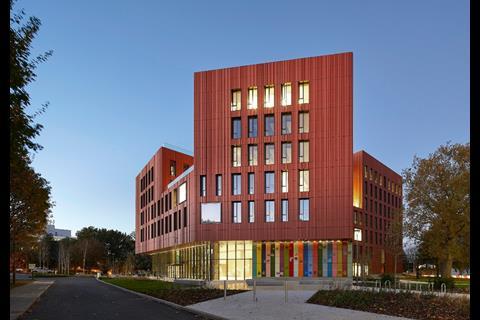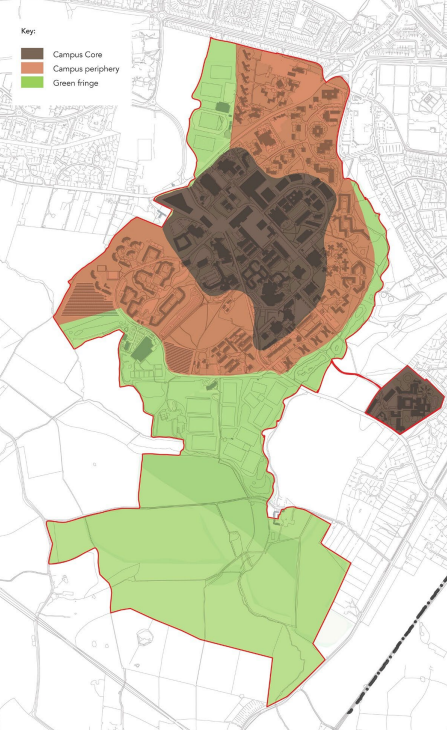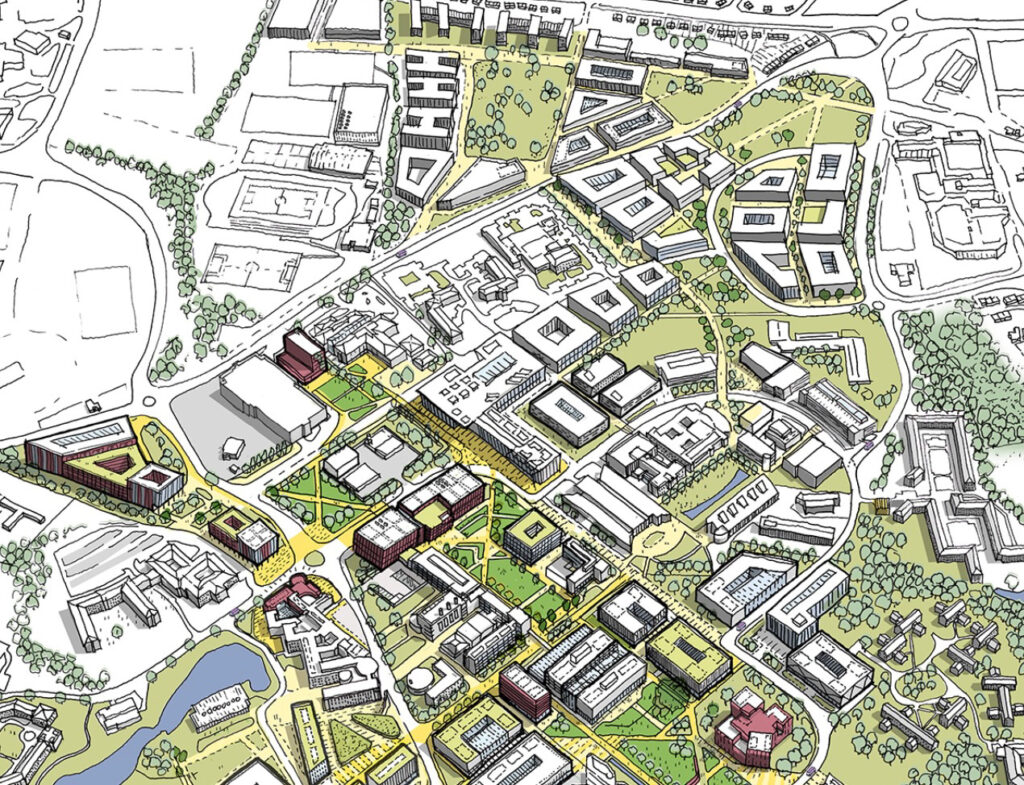
Consultation on the plans for the future development of Warwick University has recently closed. In this blog we set out the main features of the new plans and the CovSoc response to them.
The University of Warwick spans the boundary between Coventry city and Warwick District. A Supplementary Planning Document has been published jointly by Coventry City Council and Warwick District Council to set out the detailed policies for the future of the University up to 2033, in the context of the local plans for these districts. This document is based on a masterplan prepared by the university, with a longer-term vision up to 2050. The plans are also supported by Warwickshire County Council.
The University of Warwick is a world leading and UK top 10 institution with over 25,000 students and 5,500 members of staff, generating an economic impact in excess of £1bn with significant benefits for the West Midlands region and its economy.
The plans shows a division of the campus into three areas. The core campus will have higher density and a pedestrian focus. The periphery with lower densities and mainly residential. The Green fringe to the south of the campus up as far as the HS2 line.

The plan allows for an increase in the number of students living on campus and the refurbishment of some of the existing accommodation blocks. The university would like to see 1200 extra rooms provided on or near the campus by 2033 with all first-year students being able to live on campus.
Although the vision for the university runs until 2050, the SPD focuses on more specific proposals up to 2033. There are five specific projects, two of which are already in the planning process. These are:
- The Social Science Quarter including new Business School and repurposing of existing Social Sciences buildings.
- The Science and Engineering Precinct – redevelopment and refurbishment of STEM facilities in central campus and creation of a new University Green
- New Energy Innovation Centre
- Extension of Scarman House, Post Experience Centre, including additional bedspaces
- Solar arrays – large-scale photovoltaic installations to generate renewable energy.
A further ten projects may come forward by 2033.

CovSoc Response to the SPD
The society visited the university and was briefed on its plan during June 2024.
We welcome this SPD in that the University and two Councils, through consultants, have included all the possible projects that can be foreseen in and adjacent to the campus. We find few of the proposals, in themselves, contentious.
We can support the SPD, notably the proposals to intensify the central campus, the greening of the campus and the eco-park, the transport strategy and the intent to be carbon-neutral by 2030. We note too that, crucially for the University, it also suggests that given sufficient resources and partnerships with the private sector opportunities for further change / investment / intensification are indicated particularly in the central core and at Westwood and the Science Park.
Our Observations
1. The Eco- Park
The status of the eco-park and its relevance to investments up to 2033 is in doubt, there appears to be a conflict between the idea of an Eco-Park and that of a potential transport corridor / gateway. It is unclear which the University wants more: an Eco-Park or a new road?
2. Science Park and Westwood
The SPD also includes ‘two further areas of wider change which sit outside of the SPD proposals’. These are the Science Park and Westwood campus. So, confusingly, they are not SPD proposals but the SPD wording seeks to allow for developments within them.
We do wonder if the Science Park and Westwood campus areas are barriers to accessing the University rather than being part of its ‘campus periphery’. Given that the SPD recognises that these ‘two areas of further change’ could also do with more investment and intensification then perhaps while agreeing with the need for investment in these areas the SPD should provide for greater ‘permeability’ by extending the University’s pedestrian and cycle network into and through these two areas to link to the residential and commercial areas beyond.
In the case of the Canley residential area (just beyond Westwood), while the University expresses a wish to engage more closely with local communities there is a real sense in which this area is physically cut off from the University. A new access from Charter Avenue into and through the Westwood campus would provide access for residents – now many of them students in the recently-created HIMOs and residential blocks in the erstwhile Westwood Business Park.
We further note that in the case of the Science Park the SPD may provide for opportunities to diversify from the original intent to house only university business spinoffs. That this is already occurring gives us reason to believe that the intention may be that Park becomes a general business park for all users.
Greater clarity in respect of both of these areas is required.
3. Student numbers and accommodation on campus
We can only infer from the draft SPDs reference to a further net 1200 bed spaces on or near the campus that student numbers will increase to 11,000 in and around the University. We know Coventry City Council has commissioned a study into student accommodation. We assume that the outcomes will be part of the consultation draft of the Coventry Local Plan – thus there is no chance to see and discuss this study before the conclusions of this SPD. As a result, the scale of additional student housing on campus and the locations of any new student accommodation therein is nowhere discussed in the SPD. Given the purpose of the University this seems a major omission.
4. Sports facilities
There is no discussion of any relationship between the University sports facilities and those adjacent to the campus off Westwood Heath Road/Kirby Corner/Mitchell Avenue. We can only suggest that the SPD could offer an opportunity to discuss the possibilities of dual use/and all-weather facilities with sports groups and neighbouring residential communities.
5. Transport corridor /gateway
The SPD notes ‘In the south-west corner of campus, land will be retained to accommodate a potential transport corridor and which would create a new gateway into campus’. This potential transport corridor and gateway doesn’t feature on Plan 10 ‘ Pedestrian focussed’ or Plan 13 ‘Areas of Potential Change’. Presumably this road would access either from Coventry Road, Kenilworth (A429) or perhaps off the putative A46 to Balsall Common road which Warks CC has suggested could be built along the line of the HS2 haul road. It is unclear if this proposal is within the SPD timeframe to 2033. We have previously noted that this proposal and that of an Eco-Park may be in conflict. Clarification is needed.
You can read the draft SPD here.
